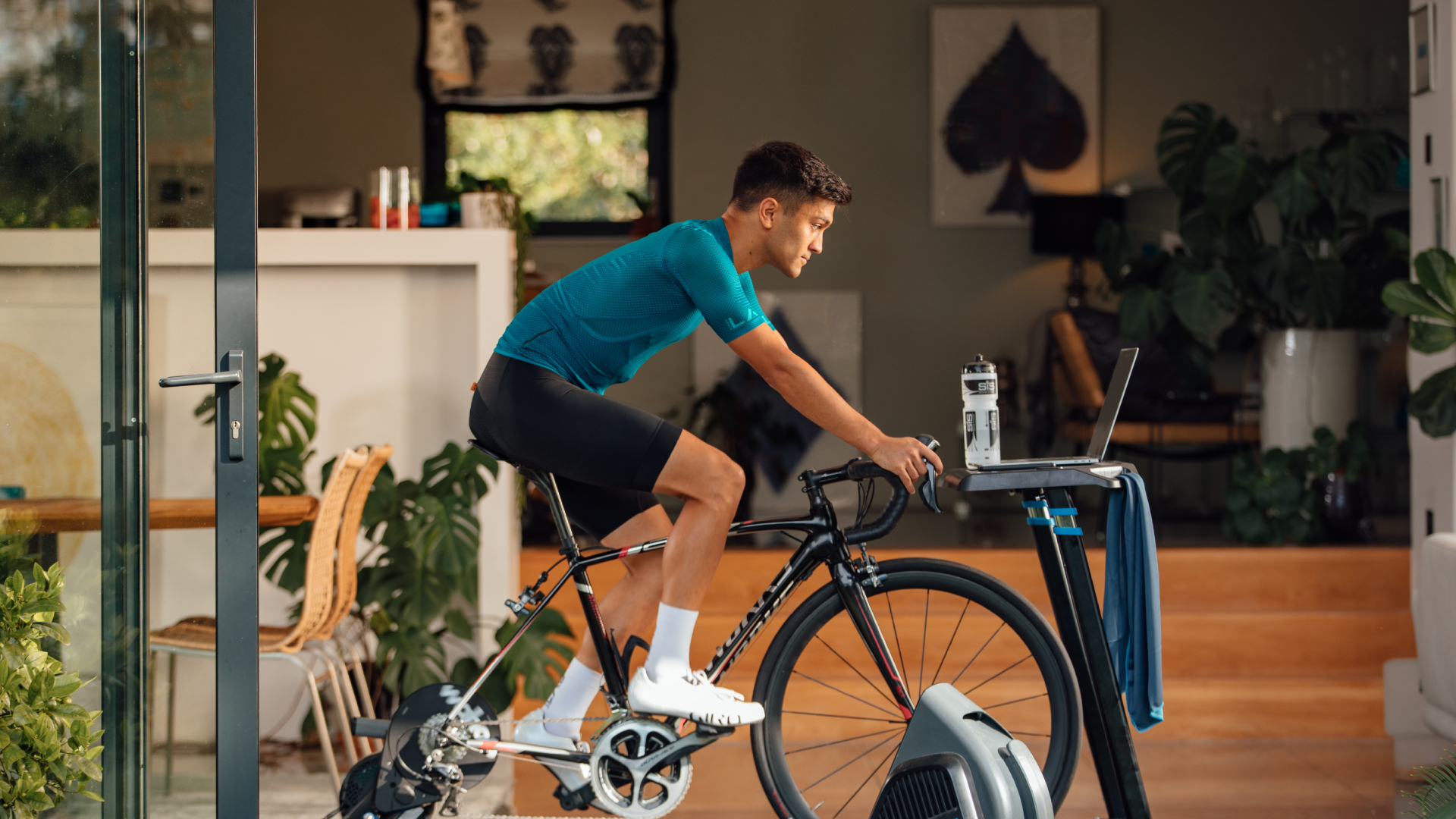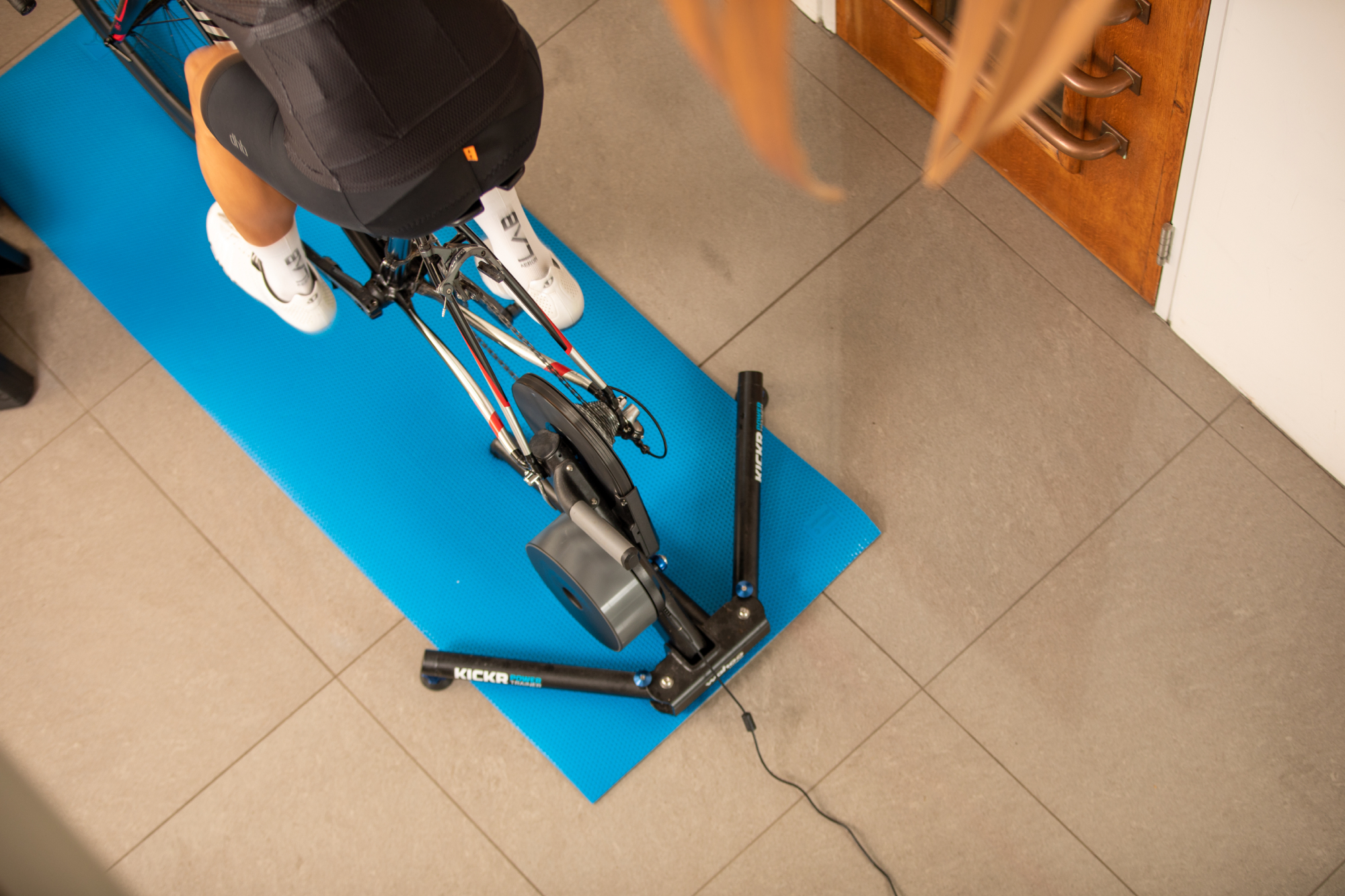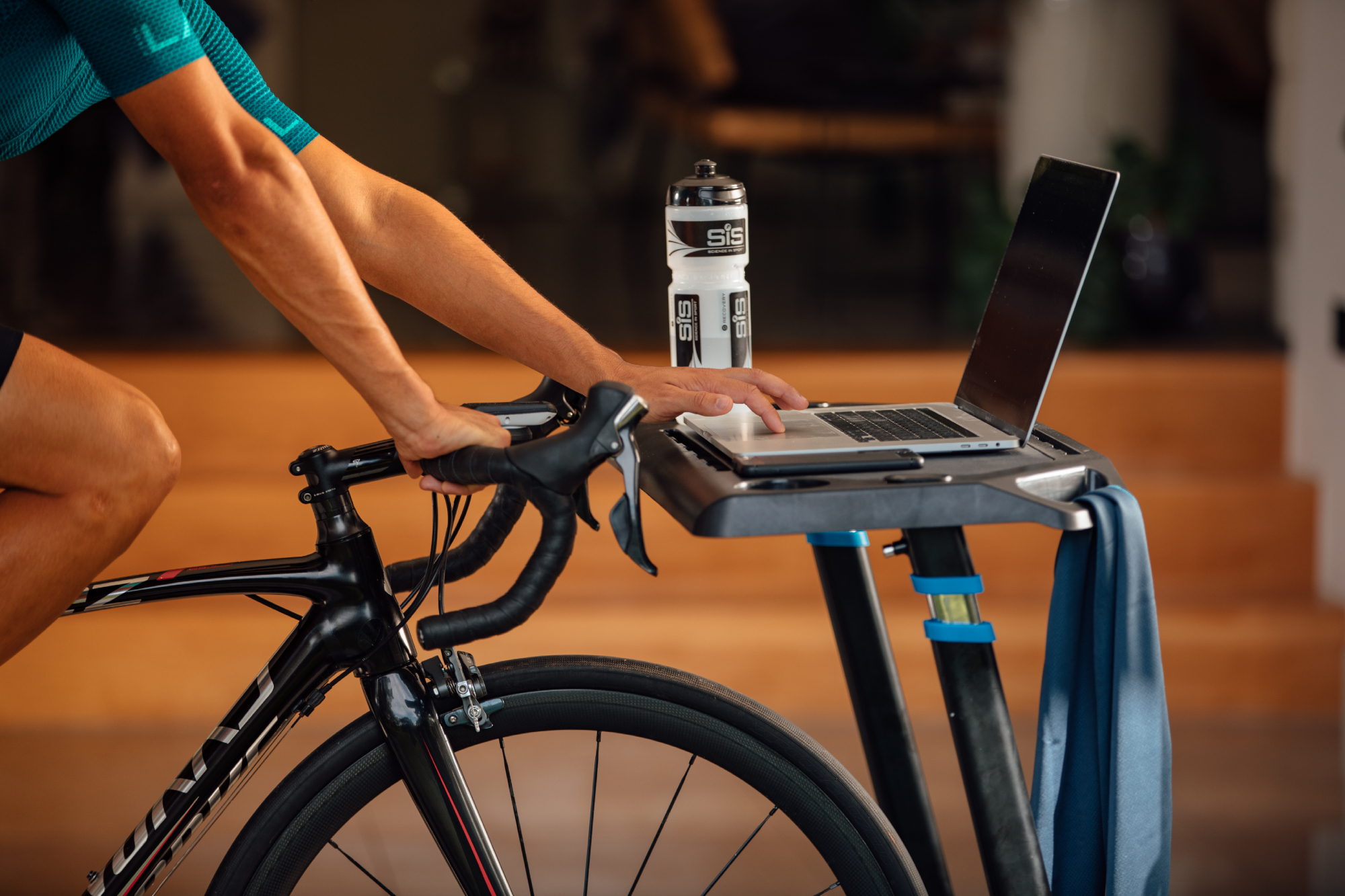ERG mode for indoor cycling explained: what it is, how to use it - and when you shouldn't...
ERG mode is great for holding you to the power outputs required by your training sessions, but there are downsides to producing an effort in this way...


If you have a mid- to top-end smart trainer - and use some of the best training apps for cycling, such as Zwift - then you'll have the option of completing your indoor workouts using ERG mode. But what, exactly, does this setting do?
Put simply, when ERG mode is switched on, your bike trainer will help you ride at a set power output by automatically adjusting the resistance to match your cycling cadence - no matter how fast or slow you turn your legs, the trainer will adjust itself to keep you at that set wattage.
So, given that you have that option, should you be using it? Are there any benefits? Or are there even cases where using it would be detrimental to the goal of the cycling workout you’ve set out to do?
To help you get the most out of the settings offered by smart trainers, we take you through when it is best to use the ERG mode setting, how it helps with maximising fitness gains from your workout, and when you should turn it off.
What is ERG mode?
First off, let’s dig a bit deeper into what ERG mode is. ERG is short for Ergometer, and what this does is control the resistance so that you can - in theory - maintain a very stable power output.
Now, power is made up of angular velocity (radians per second, with 1 RPM equal to 9.5492968 Rad/s) and torque (the force you put through the pedals) - what ERG does is balance these two to produce a consistent wattage.
So let’s say you are riding at 200 watts, this is made up of riding at 80 RPM ((200 / 80 = 2.5) x 9.5492968) producing 23.87 newton meters (Nm) of torque. The smart bike or smart trainer will put 23.87 Nm of resistance into the flywheel, so that you are pushing 200 watts. If you increase the RPM to 90, then the resistance required to produce 200 W is now 21.22 Nm, so the trainer adjusts and decreases resistance. This also works the other way when RPM is reduced and resistance increases.
The latest race content, interviews, features, reviews and expert buying guides, direct to your inbox!
You can set ERG mode to be on or off on most training platforms and it will be active when you follow either an in app workout or a custom designed session you’ve imported.
Benefits of using ERG mode for indoor cycling

One of the key benefits of using ERG mode is that it means you don’t need to focus on maintaining a power output during an interval, as the trainer does all the work for you.
This is great for riders who want to do longer Zone 2 endurance rides and remain under a certain power output, to ensure that they don’t go too hard. And it’s also useful for those wanting to do longer tempo or sweetspot efforts where you want the higher power to stay maintained and not drift below your power targets, as set by your cycling training zones.
You may have noticed that it’s also sometimes hard to get exactly the right RPM to match your power output when just using your gears. This is where ERG is fantastic as you can change your RPM to whatever you feel most comfortable at, in whatever gear you choose, and the resistance will be applied accordingly so that your target power output is achieved.
Cons of using ERG mode for indoor cycling
However, there are a few downsides to using ERG mode.
Firstly, there is a question about the resistance being applied artificially. Although this is similar to how it is when we climb outdoors, as gravity provides additional resistance, it isn’t the best for those that want to get faster on rolling or flat terrain where the changes in force applied and velocity are very variable. Sometimes it’s good to be able to adapt to those changes as in some cases just training on climbs or in ERG mode can affect performance on the flats.
This has led some to suggest that overreliance on ERG can reduce our capacity to actually produce power sustainably at higher levels (think sweetspot and up) as we are so used to requiring an artificial resistance to push against. There may be some truth in this, but equally on the flats at speed we have air resistance to push against.
Others have suggested that ERG limits our mental resilience of being able to hold a set power, but if anything ERG can help at higher power levels (threshold and up) as there is no way to give up or drop the power level down. For some, it may be useful for pushing themselves, but equally you also want to be able to do that without the artificial resistance.
Another downside is the reaction speed of ERG mode. The best smart trainers now have an ERG mode which is very fast to react to changes in either resistance, speed, or the power target of an interval. However some trainers are not as good at this. Let’s say that you have a set of micro intervals, 20 seconds at 120% threshold, with 10sec rest at 40%, for 20 repetitions so a 10 minute block. Changing from very high resistance to very low resistance over a short period of time can sometimes be delayed, so what you may find is that when the 20s effort starts you have a very high RPM and resistance is low, and then when the 10s recovery comes around the resistance doesn’t always drop straight away.
The ERG spiral of death is probably the most well known issue with using ERG. A few papers have looked into the limiters of cycling performance and suggest that our ability to maintain torque is the biggest factor in maintaining power output. When we are unable to apply the same torque, we reduce the gear so that we can spin a higher RPM and reduce torque applied.
However in ERG mode this isn’t the easiest, and what often happens is that RPM drops more and more and the resistance applied by the trainer increases more and more. In the end, the trainer wins as your RPM drops to a standstill and an insurmountable level of torque needs to be overcome. Fortunately, this is such a well known issue that many higher end trainers now have an ‘anti-spiral of death’ feature, where they sense when resistance has become too much, reduce it, and allow you to get spinning back up to speed again.
Benefits of using Level or Resistance mode for indoor cycling
For sessions where you want maximal power, such as sprints, or you’re doing micro intervals with lots of changes in resistance, then riding in Level / Resistance mode is the best way to go. This involves keeping the resistance at the hub static and changing it using your gears, or you can adjust the settings so that virtual gradients are applied along with resistance. Using this mode, you can also drop the intensity if required during an effort, rather than being constrained to the power and resistance target set for you by ERG mode.
The other benefit of Level mode is that it’s a bit more ecologically valid. What this means is that it’s a little bit more like the real world where you have changes in resistance via gradients and efforts are very unlikely to be as smooth or have that constant resistance behind them. There are also some suggestions that riding in Level mode is better for developing better pedalling efficiency than ERG mode.
When to use ERG mode

I would say all of these little downsides of ERG and benefits of Level are quite marginal, though, and at the end of the day, some of us may find it easier to complete a session using ERG mode simply because it’s one less thing to think about.
My recommendation would be that for efforts where power is a constant (Zone 1 up to Zone 3/4) and you want to keep it below or above a certain level, ERG mode is the way to go. If you want to do sessions with short repeated efforts, maximals, sprints, or just a session with more resistance variability, then Level / Resistance mode is best to use. Using a mix of the two will ensure that you don’t miss out on the benefits of either of these, and may help to make your overall training experience a bit easier and more enjoyable.
Andy is a Sport & Exercise Scientist, fully qualified and experienced Cycling Coach, Sports Director, Freelance Writer, and Performance Consultant. He spent 3 years riding for a UCI cycling team and 7 years as a BC Elite rider, competing in prestigious events such as the Tour of Britain and the Volta a Portugal.
Graduating with a first-class honours degree in Sport & Exercise Sciences, he continues to pursue his interest in research in the field of Sport Science alongside managing his coaching business, ATP Performance. He also works as a Wind Tunnel operator and Performance Consultant at the Silverstone Sports Engineering Hub, working with individuals, teams, and businesses to optimise performance and develop products.
